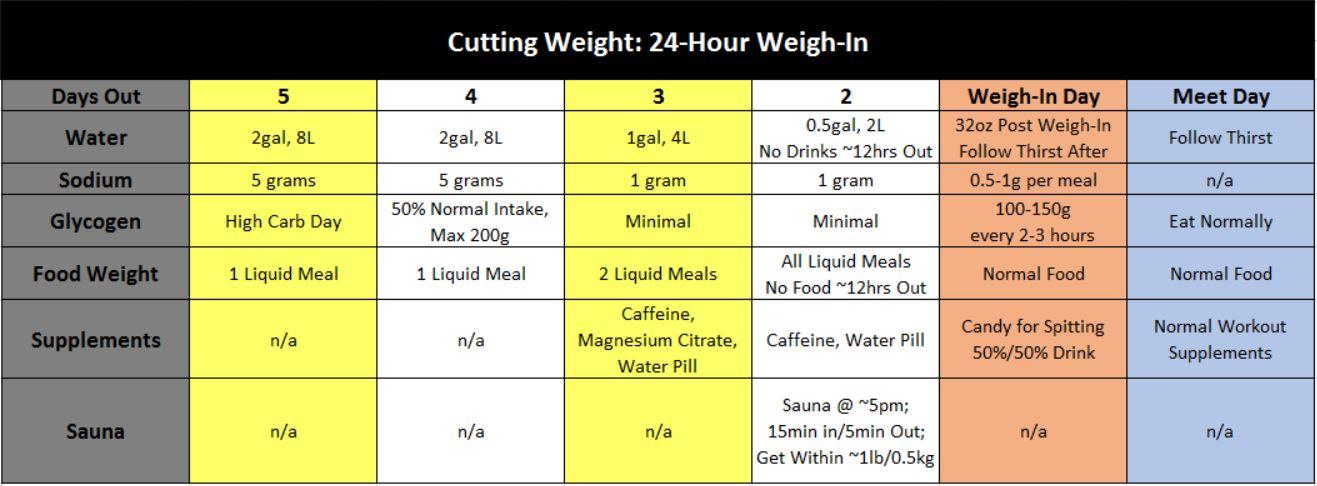
Cutting Weight for Powerlifting: A Strategic Guide to Making Weight Safely
For competitive powerlifters, making weight is a crucial part of meet preparation. A successful weight cut allows you to compete in a lighter weight class, potentially giving you a competitive advantage. However, a poorly executed cut can leave you weak, dehydrated, and unable to perform at your best. This guide provides a strategic, evidence-based approach to cutting weight for powerlifting safely and effectively, focusing on a short-term water cut for a 24-hour weigh-in.
Disclaimer: This information is for educational purposes. Extreme weight cutting carries risks. Consult with a coach or healthcare professional before attempting a significant weight cut.

The Goal: Lose Water, Not Strength
The key to a successful short-term cut is to manipulate body water and gut content, not to lose actual muscle or fat tissue. A typical water cut protocol begins about one week before the competition. The goal is to trick your body into flushing out excess water, leading to a temporary drop in body weight.
The 1-Week Water Cut Protocol (Example)
This protocol is designed for a lifter who needs to lose a moderate amount of weight (e.g., 2-5% of body weight) for a Saturday weigh-in.
Day 1-4: The Water-Loading Phase (Saturday - Tuesday)
-
Water Intake: Dramatically increase your water intake. Aim for 1.5 to 2 times your normal amount (e.g., 6-8 liters per day).
-
Why? This high intake suppresses Aldosterone, a hormone that tells your body to retain sodium and water. Your body gets used to expelling large amounts of fluid.
-
-
Sodium Intake: Maintain a high sodium intake. Salt your food liberally.
-
Why? High sodium helps your body hold onto the extra water you're drinking.
-
-
Food: Keep your carbohydrate and fiber intake normal. No need to make drastic changes yet.
Day 5: The Drop (Wednesday)
-
Water Intake: Keep water intake high (6-8 liters).
-
Sodium Intake: Drastically cut your sodium intake. Eat bland foods (plain chicken, rice, unsalted nuts). Avoid all processed foods and added salt.
-
Why? You've suppressed the water-retaining hormone, and now you're removing the primary mineral that holds water in your cells. This creates the conditions for a major fluid "whoosh."
-
Day 6: The Final Cut (Thursday)
-
Water Intake: Significantly reduce your water intake. Aim for about half your normal daily amount (e.g., 1-2 liters), sipping throughout the day.
-
Sodium, Carbs, and Fiber: Keep all three extremely low. Focus on small portions of lean protein and fats.
-
Why? Carbohydrates and fiber both hold water in your system. Cutting them helps shed the final bit of water and gut weight.
-
-
Optional: Light activity like walking or a hot bath/sauna in the evening can help you sweat out the last bit of water. Be cautious and don't overdo it.
Day 7: Weigh-In Day (Friday)
-
Water & Food: No food or water until after you have successfully made weight.
-
Action: Wake up, use the bathroom, and check your weight. Spit out any saliva to avoid swallowing fluid. Head to weigh-ins.

The Rehydration & Refueling Protocol: The Most Important Step
Making weight is only half the battle. Rehydrating and refueling properly is critical for performance. As soon as you step off the scale, the clock starts.
-
Immediate Rehydration: Start sipping on a drink containing electrolytes and sugar immediately. Pedialyte or a sports drink mixed with a scoop of electrolytes is a great choice. Scientific consensus from sources like the ISSN emphasizes the importance of sodium for rapid rehydration.
-
First Meal: Have a meal you are familiar with that is high in carbohydrates and sodium, but low in fat and fiber, as these can slow digestion. A classic choice is rice with a salty sauce, some easily digestible protein, and fruit juice.
-
Continue Sipping: Throughout the day, continue to sip on your electrolyte drink and water. Don't chug large amounts at once.
-
Snack Smart: Graze on familiar, easily digestible, carb-dense foods every 1-2 hours (pretzels, rice cakes, fruit snacks).
-
Final Meal: Have a final large, carb-rich meal in the evening.
The goal is to replenish fluids, electrolytes, and muscle glycogen without upsetting your stomach. Do not try new foods on meet day.
A strategic water cut is a tool for competitive powerlifters, not a long-term weight loss plan. By manipulating your water and sodium intake in the week leading up to a meet, you can safely drop several kilos of water weight. However, the success of the cut is entirely dependent on a disciplined and effective rehydration and refueling protocol. Master this process, and you'll step onto the platform strong, hydrated, and ready to perform.
Disclaimer: Always practice a water cut before a real competition to see how your body responds. Consult with an experienced coach for personalized advice.








